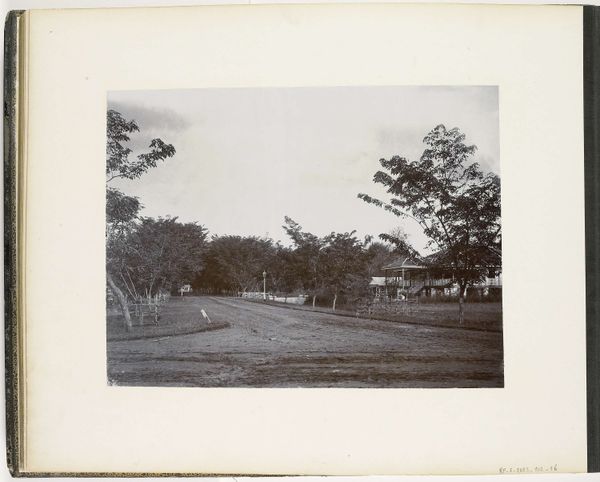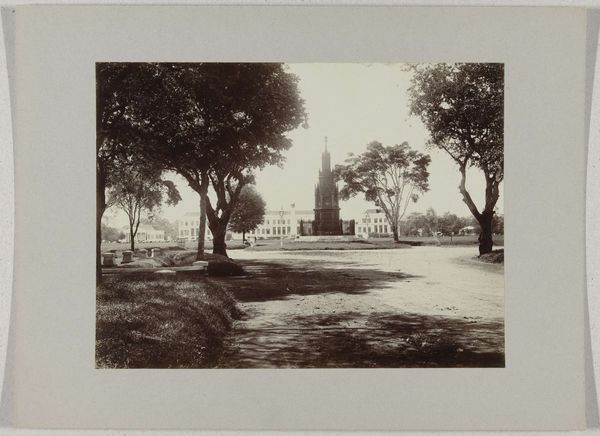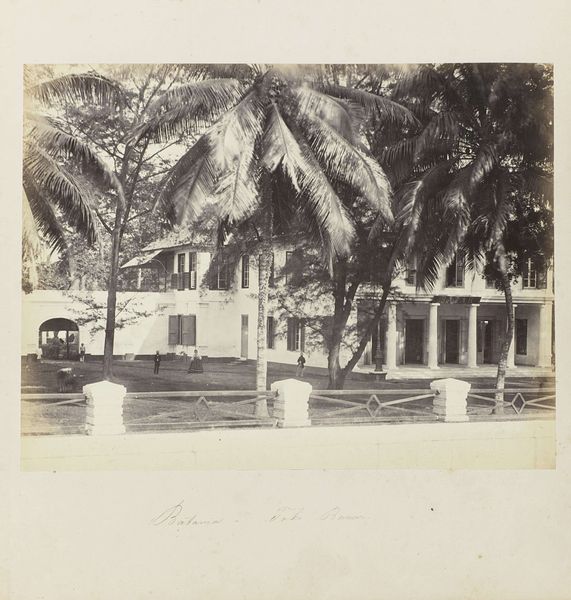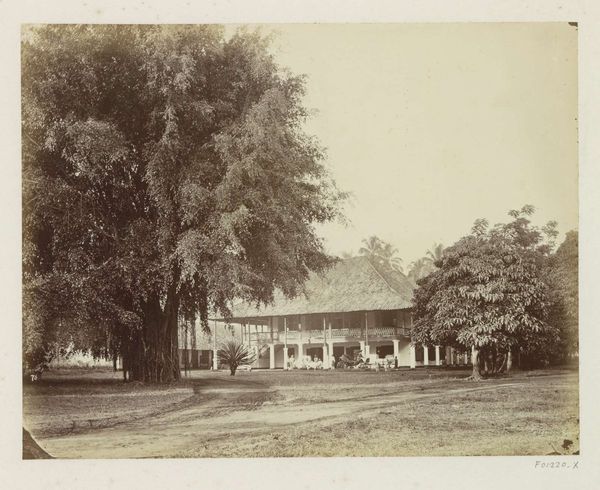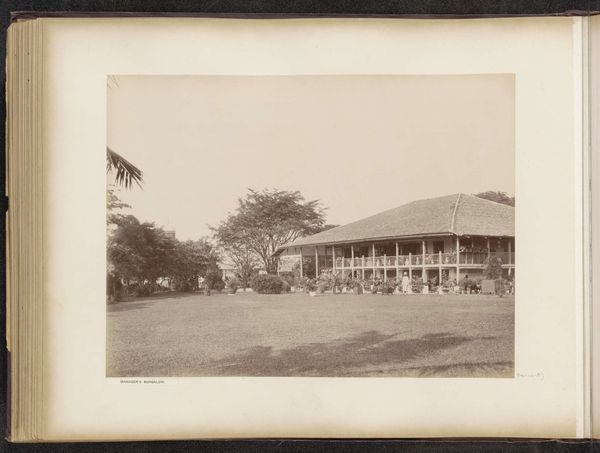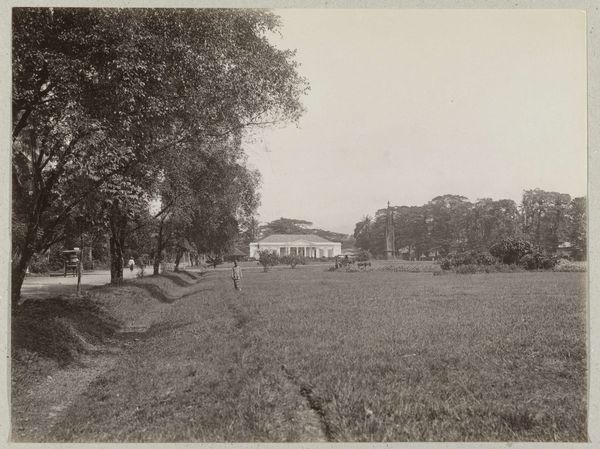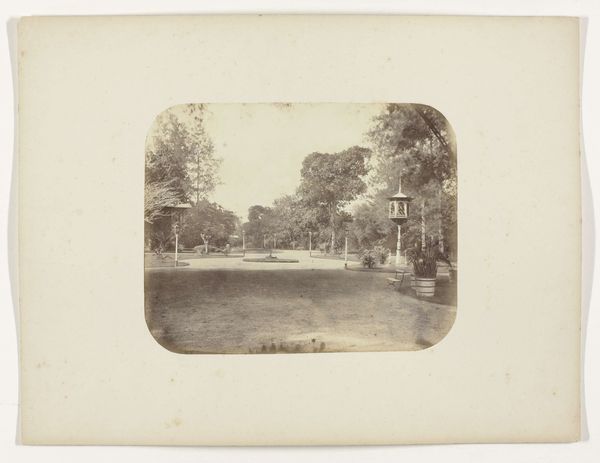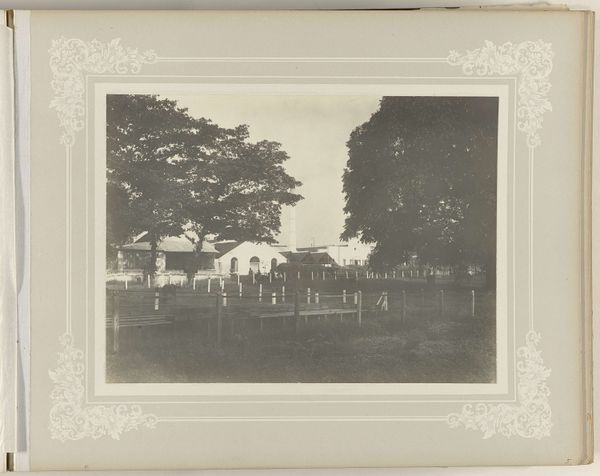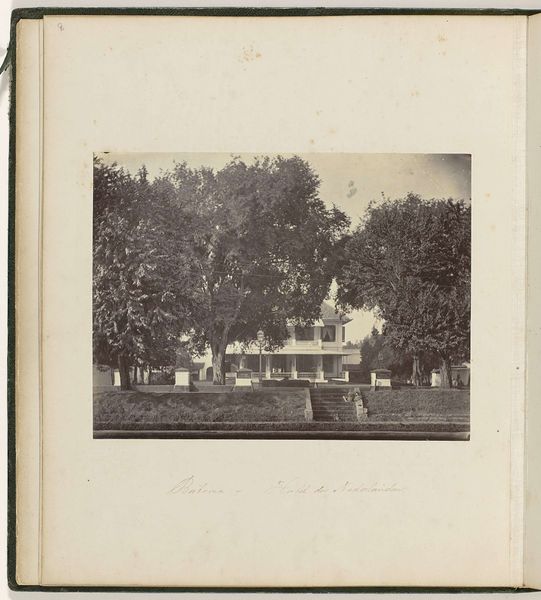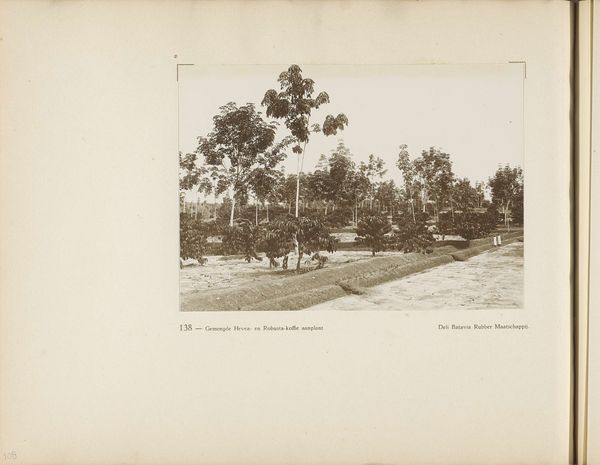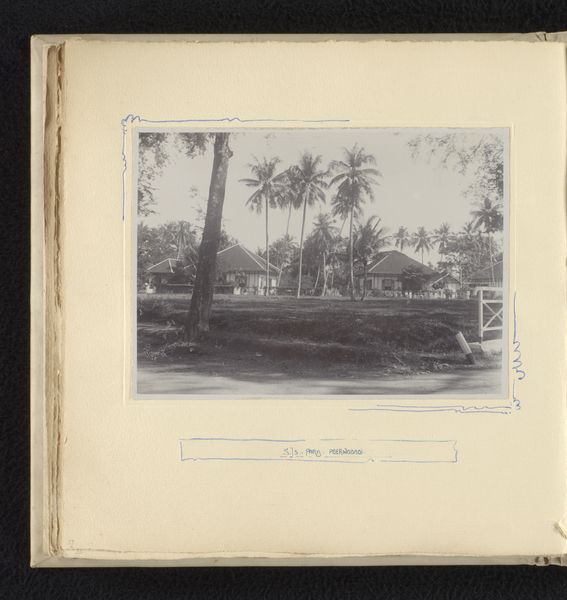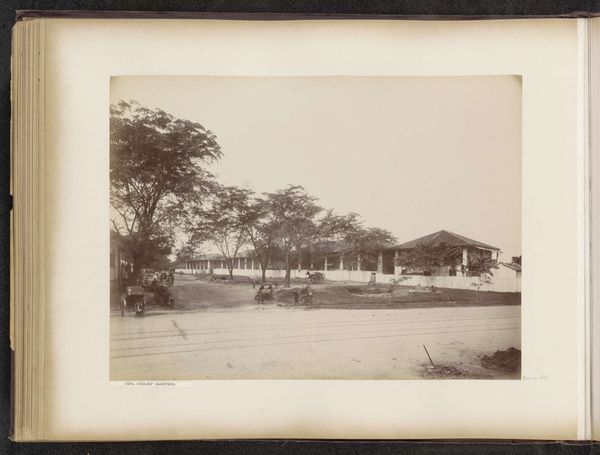
photography, gelatin-silver-print
#
landscape
#
photography
#
group-portraits
#
gelatin-silver-print
Dimensions: height 159 mm, width 207 mm, height 252 mm, width 302 mm
Copyright: Rijks Museum: Open Domain
Curator: Let's turn our attention to this intriguing photograph from approximately 1919. It's titled "Groepsfoto te Pankalpinang", and it is a gelatin-silver print housed here at the Rijksmuseum. What's your first impression? Editor: The flatness. The horizon is hazy but, beyond that, I see material interests in modes of transit and tropical landscape that’s all rendered in quite even tone, and also people grouped and distributed along it. There's almost an equality implied across the subject, which in 1919 feels very purposeful to capture this uniformity of texture. Curator: It speaks to the changing dynamics of power, doesn't it? This photo shows a colonial society frozen in a moment of transition, maybe intentionally so. Pankalpinang was a key tin mining region, so this group portrait might represent the interwoven interests of administrators and business magnates solidifying their control. Editor: Exactly! And it highlights photography's function as a tool in visually normalizing those exploitative relationships. Gelatin-silver printing made images easily reproducible. Its use suggests how they controlled distribution. The social value resides not just in image but how the print facilitates a sense of order or authority across distances. Curator: Consider also the staging. The subjects line up uniformly, facing forward. Are they demonstrating harmony? Are they being forced into order? How would you interpret that organization? Editor: Organization by ownership. See how the cars frame the people. This composition is not a document of solidarity. I’m curious what other activities occurred surrounding this shot – it reads like a moment within a process rather than a self-contained event. It emphasizes class and wealth, reflecting control in terms of making. Curator: It is difficult for us now to unravel whether the artist made this work consciously or unconsciously in promotion of the colonist agenda. The way the figures blend almost indistinguishably into the colonial infrastructure behind them, does tell its own story about hierarchy. What would you take away from this image? Editor: Its inherent artificiality makes the medium a mirror, the sepia tones highlighting its function more as reflection, perhaps, of control. I’m going to follow the photographer’s path and consider materials.
Comments
No comments
Be the first to comment and join the conversation on the ultimate creative platform.
